Retail Sales Cover Letter Overview
A retail sales cover letter is your first introduction to a potential employer, and it’s your opportunity to make a strong first impression and demonstrate why you are the ideal candidate for the sales associate position. This guide will walk you through the essential components of a compelling cover letter, from formatting basics to tailoring your content to specific job requirements. Whether you are a seasoned retail professional or just starting your career, a well-crafted cover letter can significantly increase your chances of landing an interview. Remember that this document complements your resume and provides the space to elaborate on your skills, experiences, and enthusiasm for the role, making you stand out from other applicants. By following these guidelines, you’ll be well on your way to securing your dream retail sales position.
Why a Cover Letter is Crucial
In the competitive job market, a cover letter is more than just an optional formality; it is an important tool that showcases your unique value proposition to the employer. It helps to bridge the gap between your resume and the specific requirements of the job. By explaining your skills, experience, and why you’re a good fit for the company, you make it easier for the hiring manager to see your potential. A well-written cover letter can also help you personalize your application, allowing you to demonstrate your passion for the retail industry and your commitment to the role. This personalized touch can set you apart from candidates who send generic applications. This is also the perfect opportunity to express your knowledge about the company you’re applying to.
Importance of a Strong First Impression
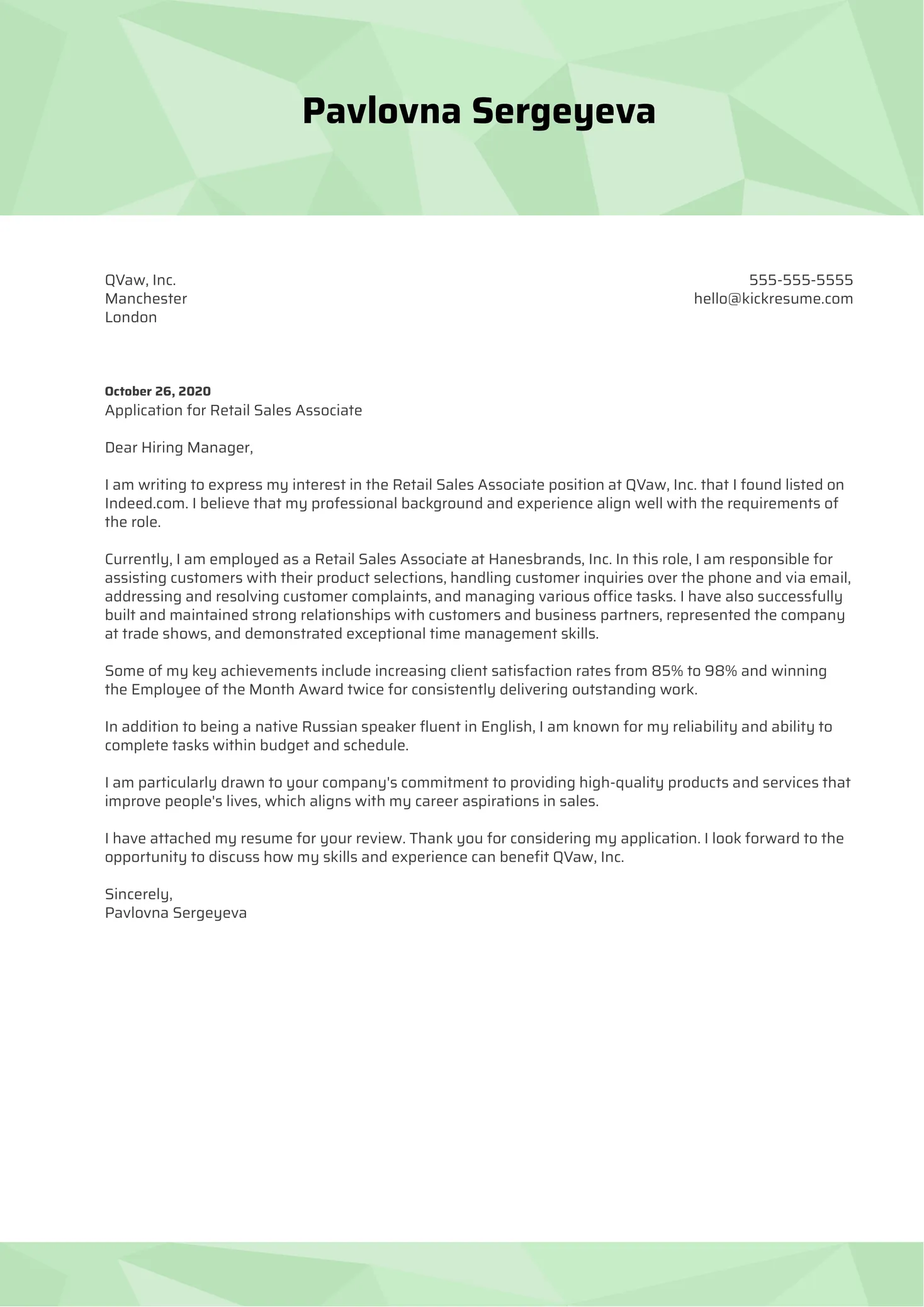
The initial impression is key in a cover letter. It is your chance to immediately grab the hiring manager’s attention and set the tone for the rest of your application. Begin with a compelling opening paragraph that clearly states the position you are applying for and immediately highlights your most relevant skills or experiences. This quick introduction can make the difference between your application being read thoroughly or being set aside. Consider what makes you unique as a retail sales associate. Your goal is to persuade the employer to read your resume, which is why the opening paragraph is so essential. Show your personality, enthusiasm, and eagerness to be part of the team, to make sure you stand out and leave a lasting impression on your potential employer.
Highlighting Relevant Skills
Focus on the skills that are most important for the retail sales associate role. Identify the skills mentioned in the job description and tailor your cover letter to emphasize how you possess those skills. Common skills to highlight include customer service, sales, communication, and teamwork. Provide specific examples of how you have demonstrated these skills in previous roles. For example, if the job description mentions customer service, describe a time you went above and beyond to resolve a customer issue, or a time you were praised for your customer service skills. When highlighting your skills, use action verbs to clearly show what you did and the positive outcomes of your actions. This section is where you show your ability to go the extra mile.
Cover Letter Formatting Essentials
Formatting your cover letter correctly is as important as the content itself. A well-formatted letter is easy to read and makes a professional impression. Use a standard font, such as Times New Roman or Arial, in a readable size (11 or 12 points). Maintain consistent margins (typically one inch on all sides) and use single spacing within paragraphs and double spacing between paragraphs. Make sure that the letter is well-organized, with clear sections for your contact information, the date, the recipient’s information, the greeting, the body paragraphs, and the closing. Proofread meticulously to check for any errors in grammar or spelling. Ensure your formatting is consistent throughout the document. This attention to detail suggests professionalism and reflects your commitment to excellence.
Contact Information and Date
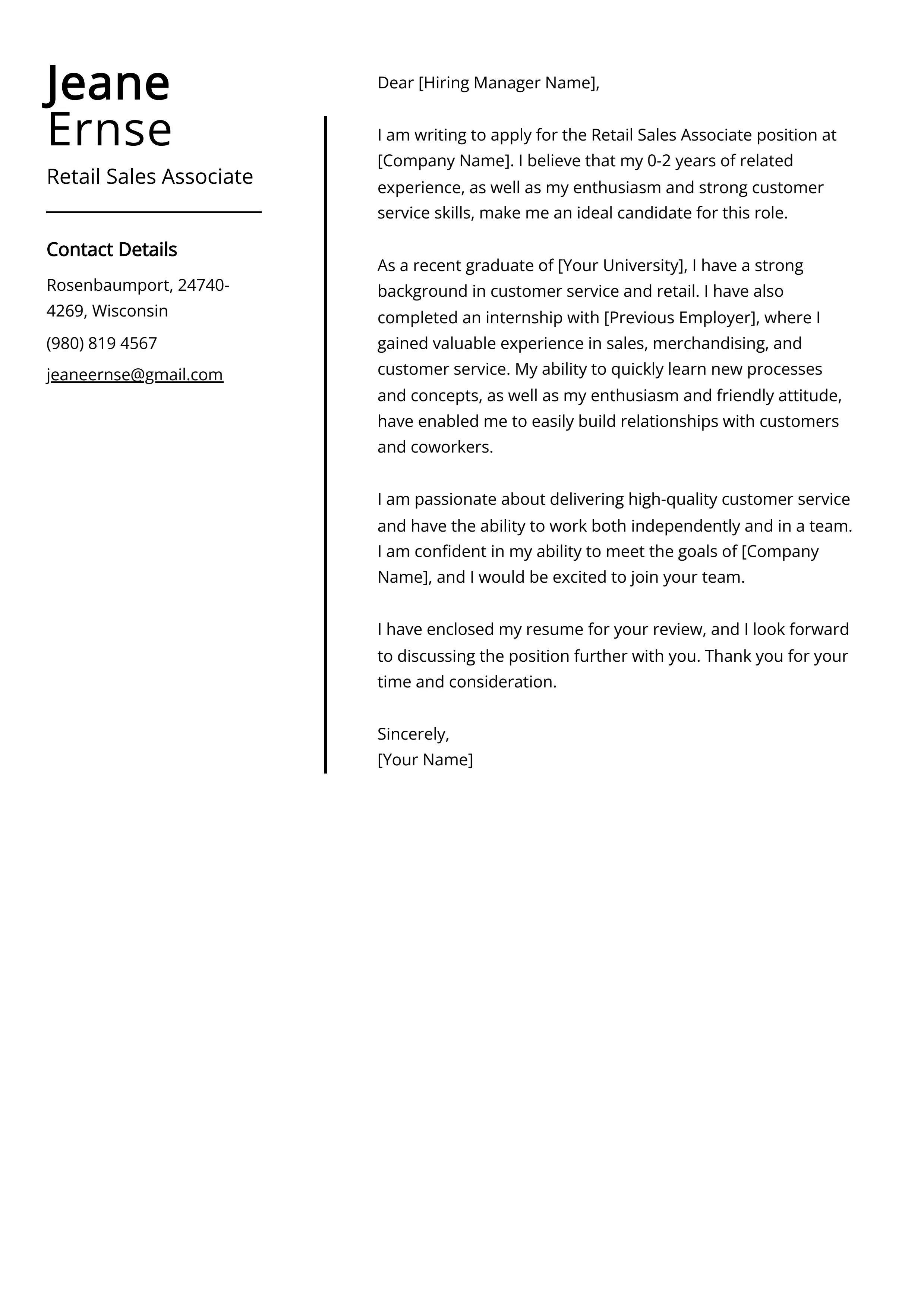
At the top of your cover letter, include your full name, phone number, email address, and professional social media links, such as LinkedIn. Ensure your contact information is current and easily accessible. Following your contact information, include the date. This provides a clear reference for the hiring manager regarding when the letter was written. Accurate contact information and a current date contribute to a professional appearance and help the employer easily reach you. These details are essential to your application and should be accurate to ensure the employer can reach you easily.
Greeting and Salutation
Start your cover letter with a formal greeting. If possible, address the hiring manager by name; this adds a personal touch and shows you’ve done your research. If you don’t know the hiring manager’s name, use a general greeting like “Dear Hiring Manager” or “Dear [Company Name] Team.” Avoid overly casual greetings. In your closing, use a professional salutation such as “Sincerely,” “Best regards,” or “Thank you.” These formal closings set a professional tone for your cover letter. Using the proper greeting and salutation can demonstrate attention to detail and professionalism, making it an important part of your cover letter.
Body Paragraphs of Your Cover Letter
The body paragraphs are the heart of your cover letter, where you elaborate on your skills, experience, and enthusiasm for the role. Divide the body into clear sections to make your points easy to follow. Provide the hiring manager with compelling reasons to choose you for the role by describing your skills and how they are relevant to the job requirements. To make your letter stand out, customize it with examples from your past experiences or achievements and how they align with the company’s values. Clear, well-structured paragraphs keep the reader engaged and show your ability to express yourself clearly and concisely.
Opening Paragraph Grab Attention
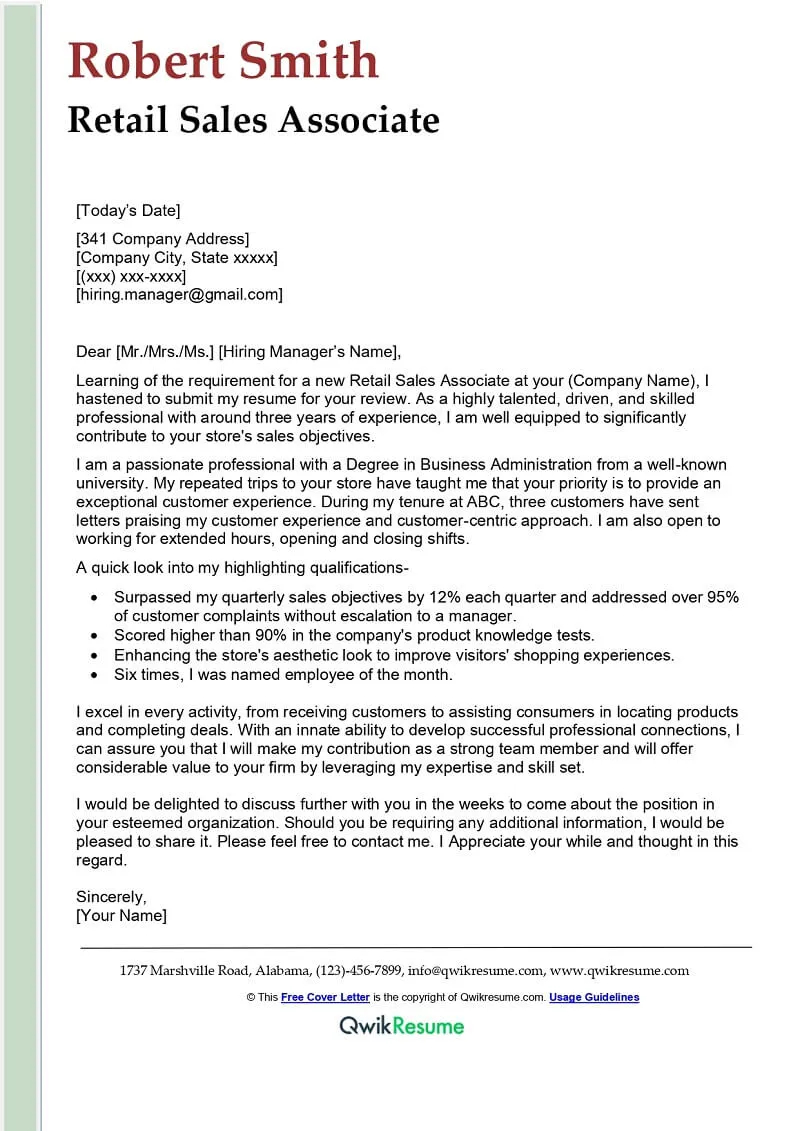
Begin your cover letter with an opening paragraph that immediately grabs the hiring manager’s attention. State the specific position you are applying for and how you learned about the opportunity. Briefly highlight your most relevant skills or experiences that match the job requirements. Your goal is to create a strong first impression and entice the reader to continue reading. Clearly articulate your enthusiasm for the role and the company. This paragraph should be concise and focused, setting the stage for the rest of your cover letter. Make sure you express your understanding of the company’s mission and values. Highlight any unique qualifications that make you stand out from other candidates. This initial impression should be compelling and encourage the hiring manager to read the full letter.
Middle Paragraphs Showcase Skills and Experience
In the middle paragraphs, provide detailed examples of your skills and experiences. This is the section where you showcase your value to the company. Use the job description as a guide to identify the skills and experiences the employer is seeking. Back up your claims with concrete examples of your accomplishments. Use the STAR method (Situation, Task, Action, Result) to describe your experiences. This approach helps you tell a clear and compelling story about what you achieved. Quantify your achievements whenever possible. For example, instead of saying “Increased sales,” say “Increased sales by 15% in six months.” The body paragraphs should highlight skills and experiences that align with the job requirements. Show how your skills have contributed to previous success. Make sure to mention what makes you unique as a retail sales associate.
Closing Paragraph Call to Action
Conclude your cover letter with a call to action. Reiterate your enthusiasm for the position and the company. Express your interest in an interview and mention your availability. Thank the hiring manager for their time and consideration. Make sure to restate your interest and availability for an interview. This is an important step, as it encourages the hiring manager to move forward in the hiring process. The closing paragraph should leave a positive final impression, expressing your desire to join the team. Close with a professional closing, such as “Sincerely,” or “Best regards,” and your full name.
Tailoring Your Cover Letter
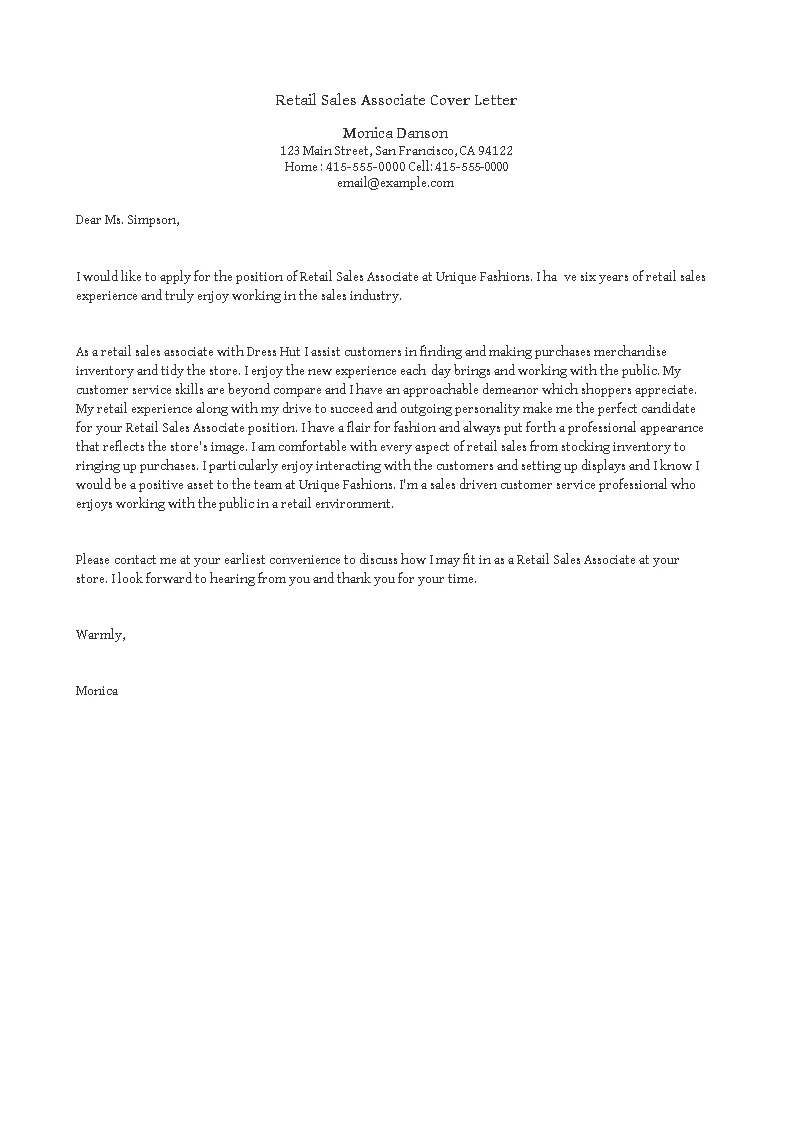
Customizing your cover letter for each job application is essential. Generic cover letters can appear impersonal and fail to highlight your suitability for the specific role. Tailoring your letter shows that you have taken the time to understand the job requirements and the company’s values. This effort can greatly increase your chances of getting an interview. Tailoring ensures your cover letter reflects a genuine interest in the position and the company and makes your letter more personal.
Researching the Retail Company
Before you write your cover letter, research the retail company to which you are applying. Visit the company’s website to learn about their mission, values, and products. Look at their social media accounts to understand their brand and culture. Understanding the company will help you align your skills and experiences with their needs. This research demonstrates your genuine interest in the company and helps you tailor your cover letter to specifically address their needs. Make sure you understand their products and services and what makes them unique. Be sure to mention any shared values to further show you are a good fit.
Matching Skills to Job Requirements
Carefully review the job description to identify the required skills and qualifications. Highlight how your skills and experiences match those requirements. Use the same keywords and phrases from the job description, when appropriate, to show that you are a great fit. Use specific examples from your past to illustrate how you have successfully used those skills. Show how your skills and experiences align with the job’s essential requirements and the company’s needs. Doing so shows you are a good fit for the position, boosting your chances of getting the job.
Proofreading and Editing Your Cover Letter
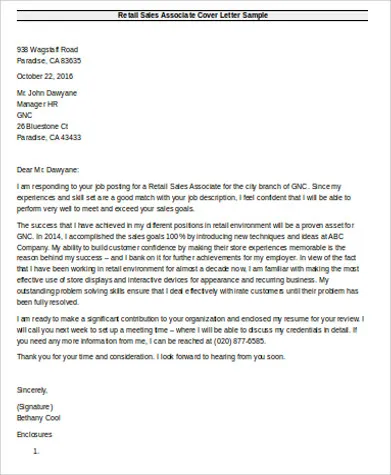
Proofreading and editing your cover letter is critical before submitting it. Errors in grammar, spelling, and punctuation can damage your professional image and might lead to rejection. Proofread your cover letter multiple times. Use a spell checker, but don’t rely on it entirely. Have a friend, family member, or career advisor review your cover letter. This fresh perspective can help you catch errors you might have missed. Ensure your tone is appropriate and professional. Make certain your cover letter is error-free, proofread, and presents you professionally.
Common Mistakes to Avoid
Avoid common mistakes that can weaken your cover letter. Do not use generic templates without tailoring them to the specific job. Avoid typos and grammatical errors. Do not use slang or informal language. Make sure your cover letter is not too long or too short. Keep it concise and focused on your relevant skills and experiences. Don’t be negative or critical of previous employers. Be sure to make it clear you are applying for the correct role. Avoid these common mistakes to ensure your cover letter is effective and professional.
Using a Professional Tone
Maintain a professional tone throughout your cover letter. Use formal language and avoid slang or casual expressions. Be polite and respectful in your communication. Use clear and concise language to express your ideas. Convey your enthusiasm for the role and the company. Always present yourself in a positive and professional manner, showcasing your skills and experiences in a way that makes you a strong candidate. Use language that reflects your professionalism and qualifications. Your professionalism is important.
